How entry doors and patio doors are rated
WHAT TO LOOK FOR IN AN ENERGY-EFFICIENT DOOR
When we designed our entry doors and patio doors, energy efficiency was top-of-mind for our engineering team. So, as you explore our products, you’ll find we’ve taken care of all the details, both big and small, that combined have resulted in highly energy-efficient exterior doors.
What does that mean for you? With ProVia energy-efficient entry doors and sliding glass doors, your home will be more comfortable and require less energy (and cost) to heat and cool your home. You can be assured of this performance through the stringent testing our products go through and the various energy efficiency standards they meet. There’s lots of information that can tell you how to determine whether your chosen entry or patio door is energy efficient, including the U-Factor and other measurements. Read below to learn how you can verify you’re looking at highly energy-efficient entry doors and sliding glass doors.
Embarq® Cherry 440-2P in Hazelnut with Laurence Decorative Glass
The best options for energy-efficient doors
PROVIA’S ENERGY STAR® ENTRY DOORS
& PATIO DOORS
Performance criteria for doors are based on the amount of glass they have (glazing level) and ratings certified by the National Fenestration Rating Council (NFRC). To compare the NFRC ratings of ProVia doors, use the NFRC’s Certified Products Directory.
- Multi-chamber profiles and 4 9/16” frame depth – Offer greater thermal efficiency and increased sound abatement.
- Graphite polystyrene rigid foam insulation – Fills certain cavities of the patio door frame to reflect radiant heat energy, increases resistance to the flow of heat, and increases the R-value as the temperature outside drops.
- Barrier fin weatherstripping – Prevents air from coming into your home.
- Bulb seals – Closed cell compression seals that prevent water from penetrating the foam cell structure and provides a barrier that enhances the weatherstripping’s sealing performance.
Energy Star® Certification
ENERGY STAR, a government-funded program, provides simple, credible and unbiased energy-efficiency information about products available to U.S. consumers. To be an ENERGY STAR door, it must be:
- Manufactured by an ENERGY STAR partner
- Independently tested, certified and verified by the NFRC
- Have NFRC ratings that meet strict energy-efficiency guidelines set by the U.S. Environmental Protection Agency (EPA).
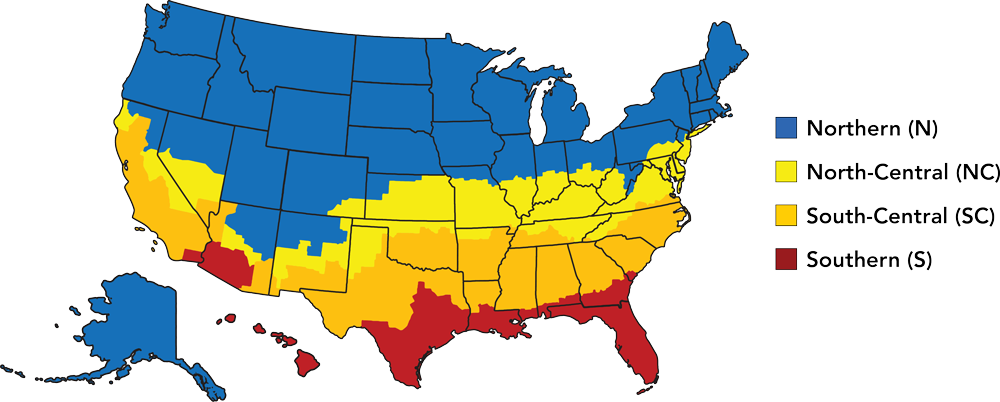
- When looking for an ENERGY STAR exterior door or patio door, consider the climate in which you live. The ENERGY STAR climate zones chart provides information to help identify the most energy-efficient front doors and sliding glass doors for your region.

NFRC LABEL
The National Fenestration Rating Council, an independent, non-profit organization that establishes window, door, and skylight energy performance ratings, helps homeowners compare products by the label that is applied to the products of participating suppliers. The NFRC label for doors provides information on the energy performance for five factors:
- U-Factor – The insulating value of the entire door system. Lower numbers reflect better insulating value, with values generally ranging from 0.25 to 1.25.
- Solar Heat Gain Coefficient (SHGC) – The amount of heat from the sun passing through the glass (if the door has glass). Lower numbers indicate glass is keeping heat from entering your home, with SHGC measured on a scale of 0 to 1.
- Visible Transmittance – The amount of visible light passing through glass. Higher numbers indicate glass is allowing more light to enter your home. The visible transmittance is measured on a scale of 0 to 1.
- Air Infiltration – Measures how much air enters or escapes through the door, with lower numbers indicating that less air enters or escapes.
- Condensation Resistance – The amount of moisture it takes for glass to condensate when exposed to extreme interior and exterior temperature changes. Higher numbers indicate better resistance to condensation. The condensation resistance is rated on a scale of 0 to 100.
Homeowners seeking to compare the NFRC ratings of ProVia windows can find our energy-efficient windows in the NFRC’s Certified Products Directory.
industry association
Through its membership in Window & Door Manufacturers Association (WDMA), ProVia collaborates on standards and advocacy efforts to advance the window and door industry.
Visit Open Up to Performance, an educational resource provided by the WDMA, for industry news and informational content, including articles on design, sustainability, and performance.

Insulated Glass Unit
ProVia offers multiple “glass packages,” combinations of window glass construction, energy-efficient coatings and insulation, to provide varying levels of energy efficiency, in part, to meet ENERGY STAR standards for different regions. Here are the components that make up an insulated glass unit:
- Low-E Glass – Special coatings that reflect infrared light, keeping your home warmer in the winter and cooler in the summer. These low-E coatings also reflect ultraviolet light, which helps protect interior furnishings from fading. ProVia offers additional UV-protective coatings as well, though these may not be good options for homeowners with house plants as additional UV coatings will block rays vital for plants.
- Multiple Panes – Two panes of glass with an air or gas-filled space in the middle insulate much better than a single pane. And, three units are better than two. ProVia offers glass packages with two and three panes.
- Gas Fills – Energy-efficient argon or krypton gas between the panes. These odorless, colorless, non-toxic gases insulate better than air.
- Super Spacer® – A warm edge spacer keeps the glass panes the correct distance apart. ProVia’s Super Spacer, a non-metallic, dual-seal insulating glass spacer, insulates the pane edges, reduces heat transfer through the window and offers the lowest U-Factor among dual-seal systems. Super Spacer performed the best among other dual- and single-seal units in the world’s toughest IG (insulating glass) durability test.
The best options for energy-efficient windows
PROVIA ComforTech™ Glass Packages
ProVia’s glass packages, branded the ComforTech Warm Edge Glazing System, have acryonym monikers that help describe the differences among them. Each ComforTech product is rated by its R-Value and has passed stringent testing and is IG Certified to ensure seals are durable and will not leak. (The R-Value only reflects data for the center of the glass, while overall window energy efficiency is measured by the U-Factor.)
UNDERSTANDING THE ACRONYMS
- T – Triple Glazed (three panes)
- D – Double Glazed (two panes)
- L – Low E
- C – Clear Glass
- A – Argon Gas: Chemically inert to UV radiation, sunlight stable, non-corrosive, and non-toxic, making it the best choice for double-glazed glass packages
- K – Krypton Gas: Inert to glass coatings, heat and spacers, has the lowest conductivity of any gas used and raises the inner glazing temperature. This gas performs well in small chambers, making it the best choice for triple-glazed glass packages.
- E – Elevation (no gas)
- UV – Ultraviolet
- HC – Hard Coat
TLK/TLK-UV
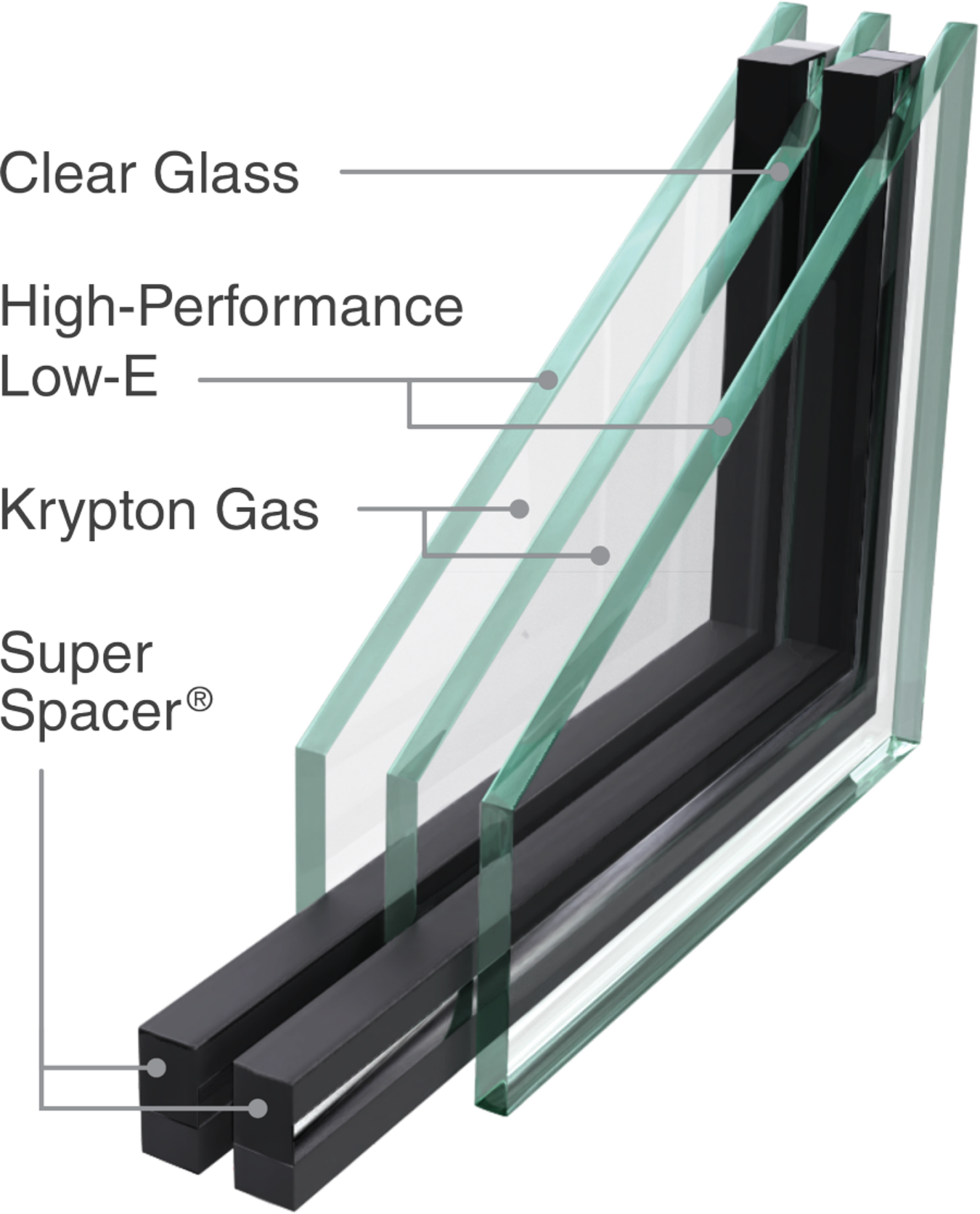
The best value in energy savings! This glass package has high performance Low-E coating applied to two panes of glass. Both insulating chambers are filled with Krypton gas.
TLA/TLA-UV
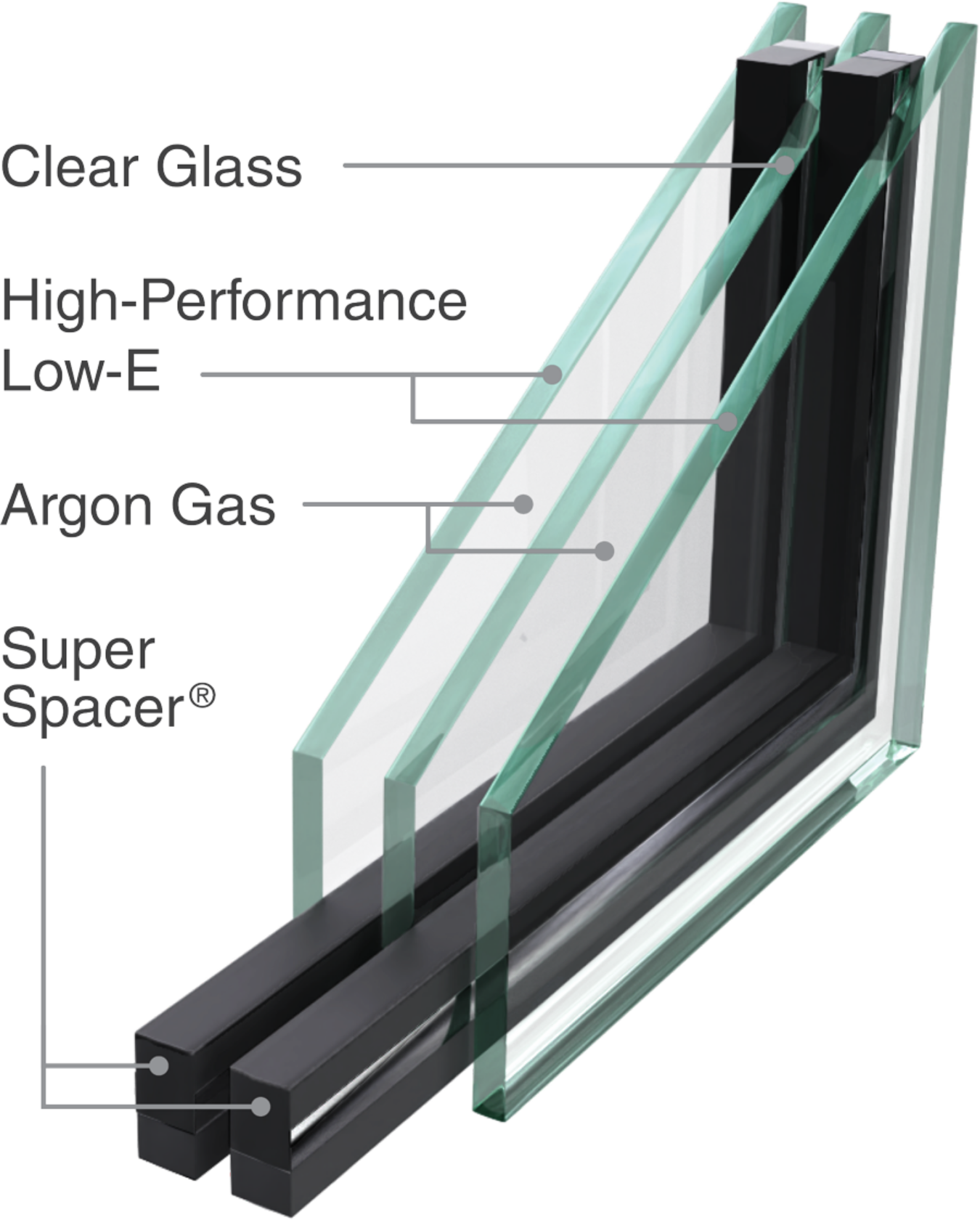
Combat cold weather with this triple glazed package. High performance Low-E coating is applied to two panes of glass. Both insulating chambers are filled with Argon gas.
DLA/DLA-UV
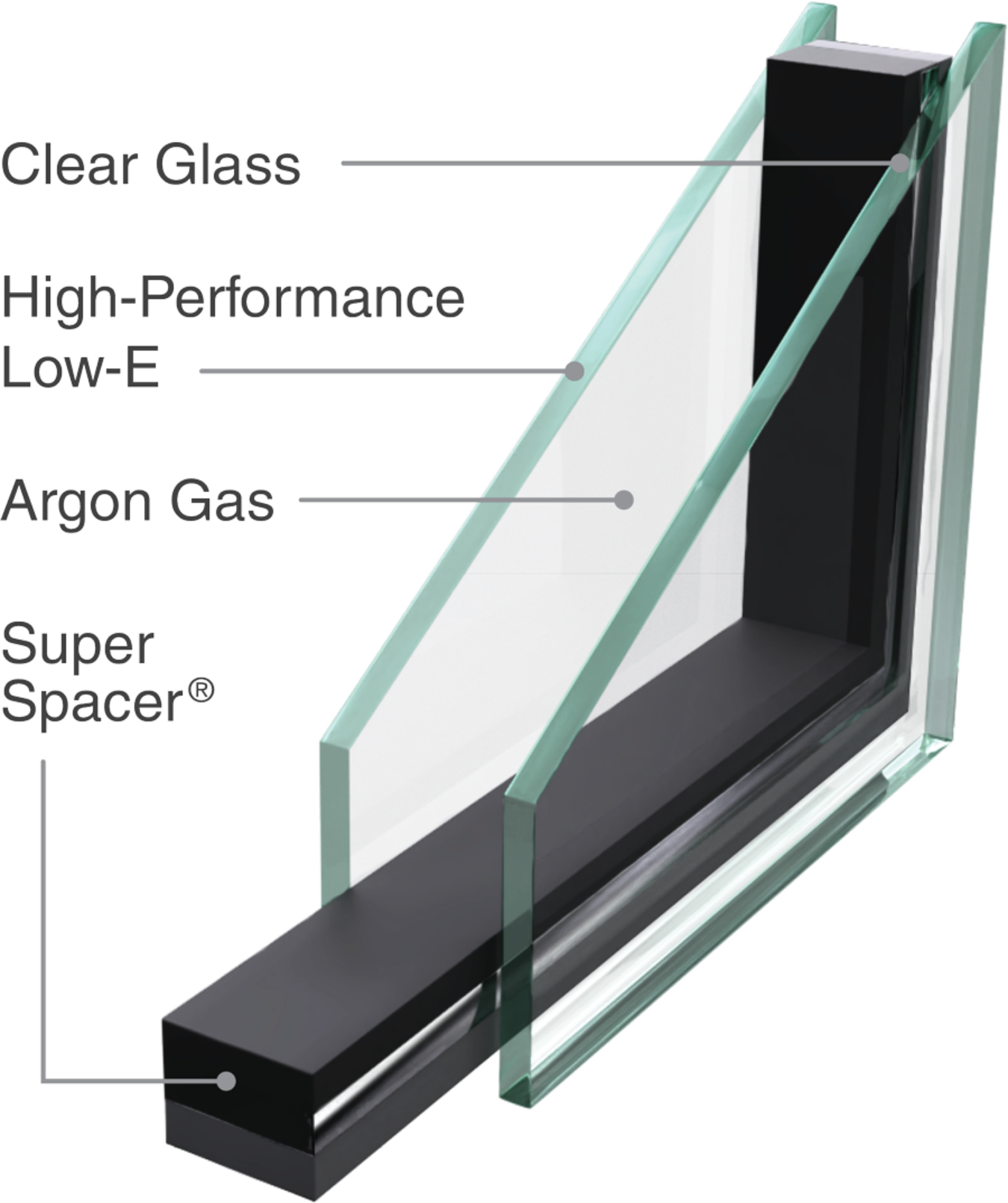
Double glazed glass package with high performance Low-E coating applied to one pane. Insulating chamber is filled with Argon gas.
DC
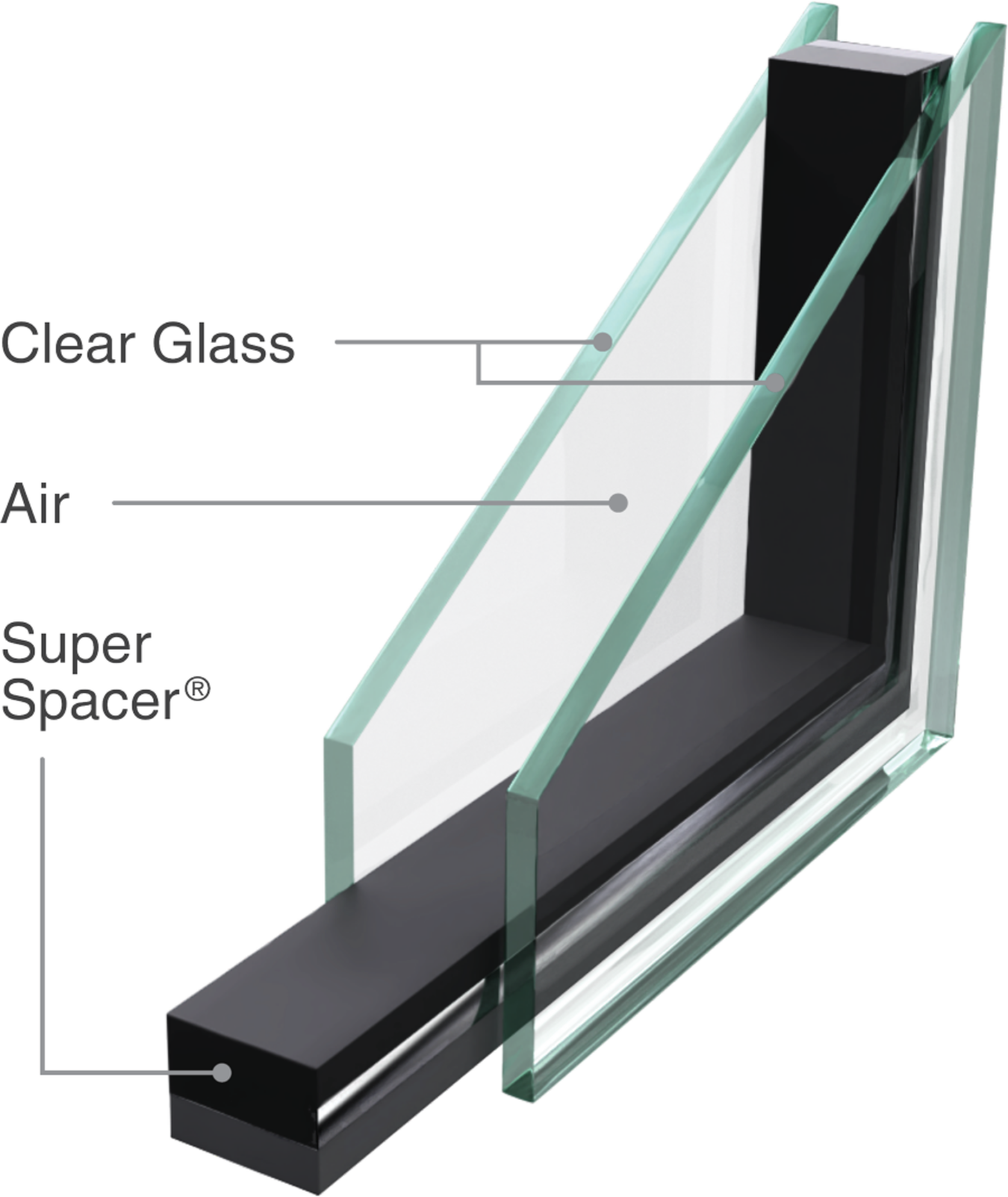
Baseline double glazed glass package, with two panes of clear glass and the air space acting as an insulator. No Argon gas.
TLE/TLE-UV
Elevation Series (For High Altitude Areas)
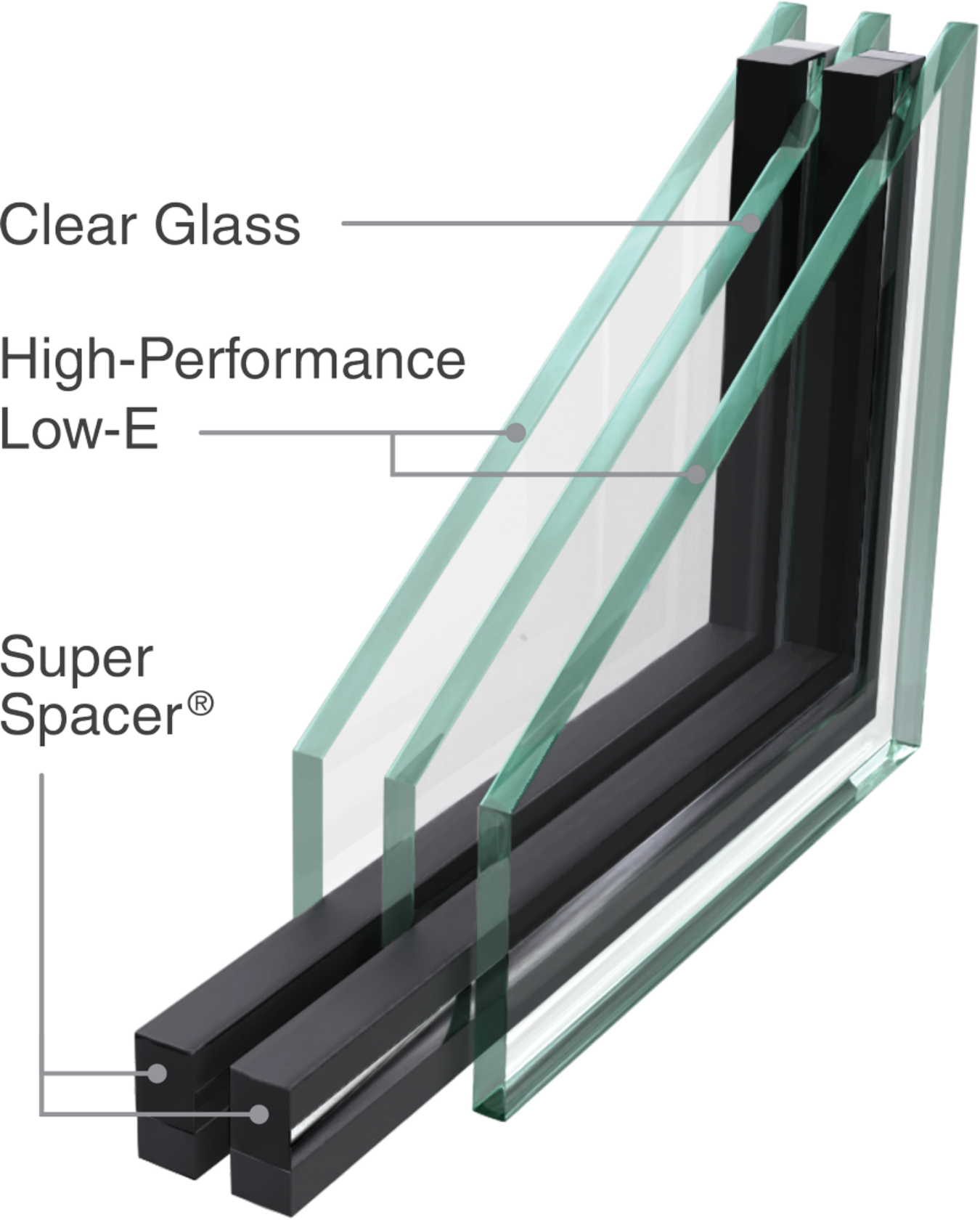
Insulated glass without Argon or Krypton. Capillary tubes are open and inserted behind glazing bead. Low-E softcoat and hardcoat available for vinyl windows and vinyl patio doors.
DLE-UV
Elevation Series (For High Altitude Areas)
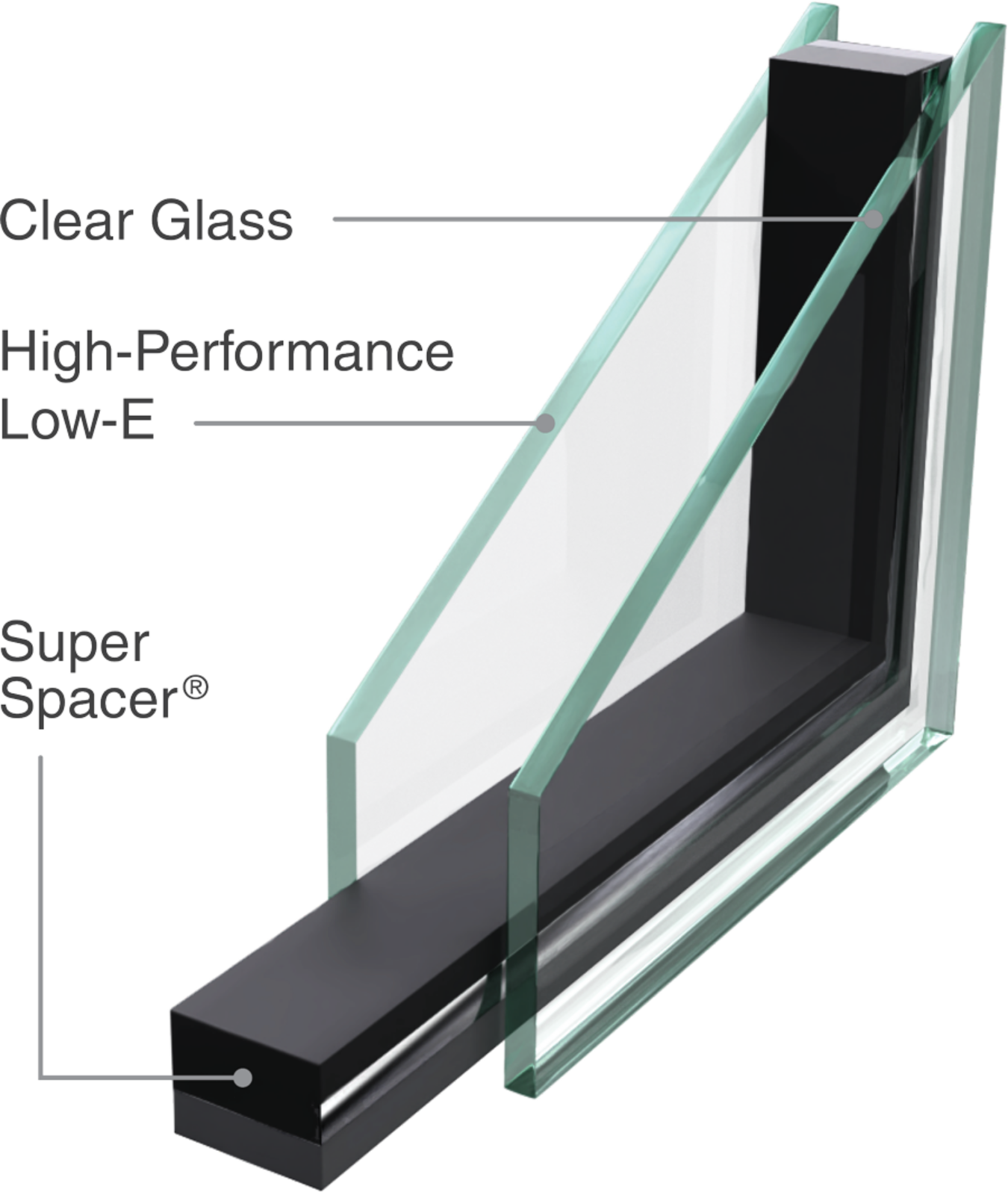
Insulated glass without Argon or Krypton. Capillary tubes are open and inserted behind glazing bead. Low-E softcoat and hardcoat available for vinyl windows and vinyl patio doors.
DE
Elevation Series (For High Altitude Areas)
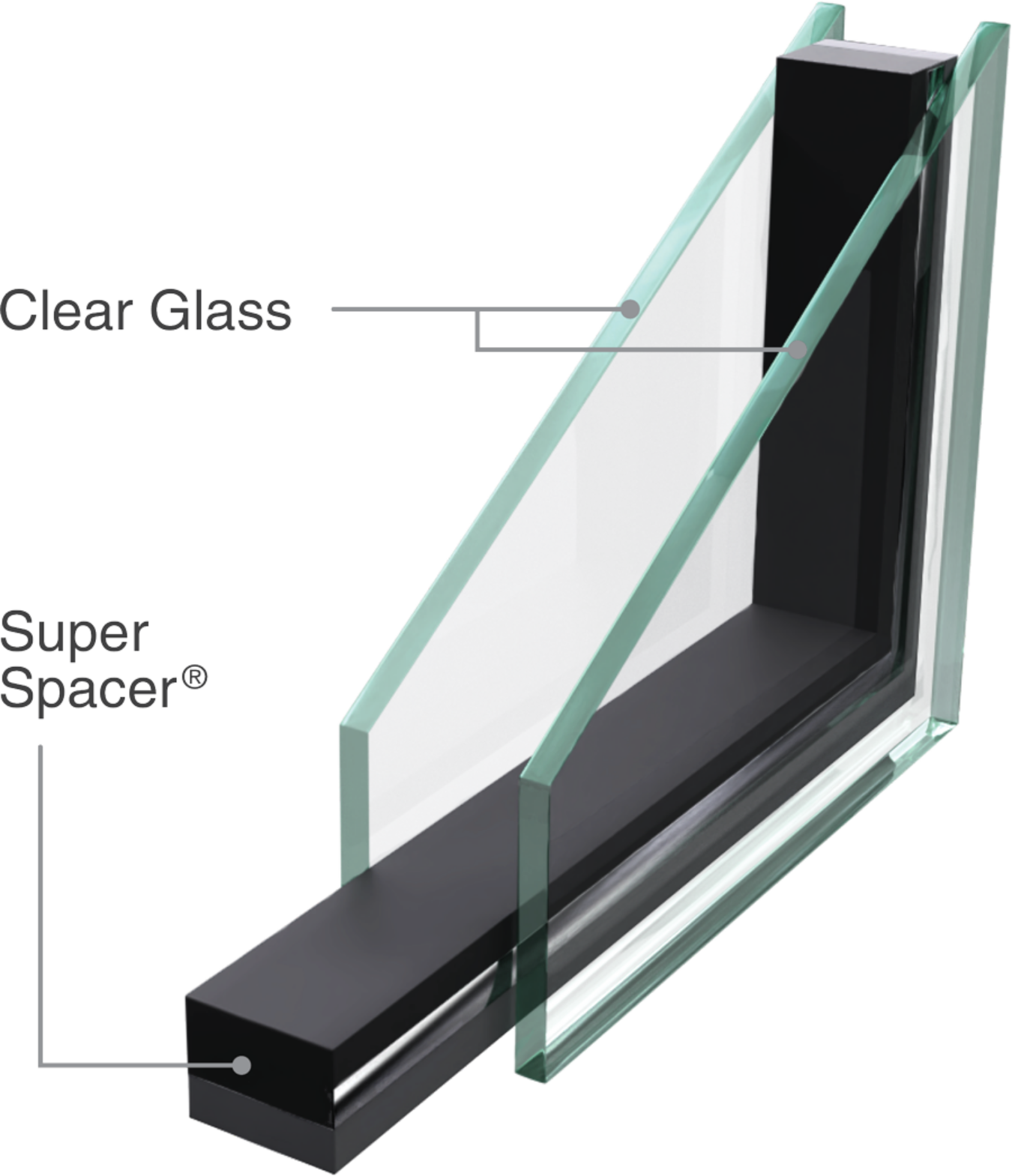
Insulated glass without Argon or Krypton. Capillary tubes are open and inserted behind glazing bead. Low-E softcoat and hardcoat available for vinyl windows and vinyl patio doors.
The features that make ProVia doors among the best
ANATOMY OF AN ENERGY-EFFICIENT ENTRY DOOR
The overall construction of ProVia’s entry doors and hinged patio doors along with the energy-efficiency enhancements to the glass work together to provide you durable entry doors and hinged patio doors that deliver the comfort you require and the energy cost-savings you want.
All of ProVia’s doors that do not have glass are ENERGY STAR certified. Whether you choose one of our fiberglass doors or steel doors, you can be assured that you’ll get a durable entry door or hinged patio door that is built for your comfort and energy savings.
Learn more below about the specific components that contribute to each door’s energy efficiency. Then read about how we make entry doors with glass more energy efficient.